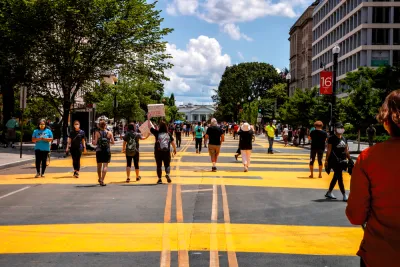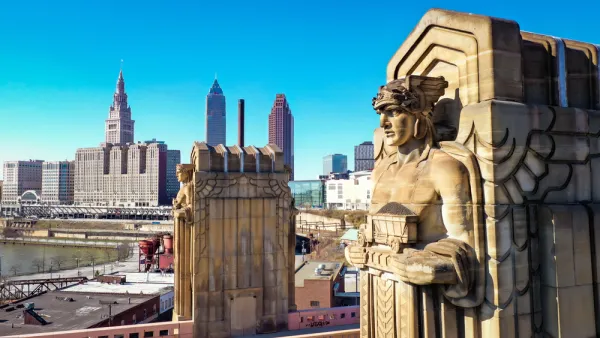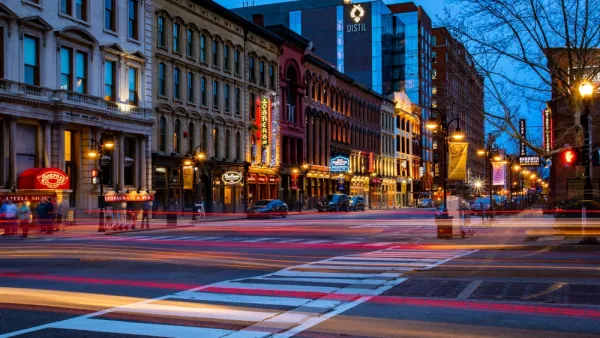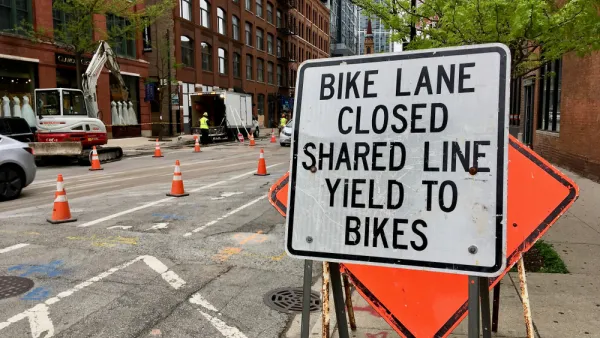Washington, D.C. was an early adopter of Vision Zero in the United States, but eventually it became emblematic of the country's lack of progress in reducing traffic collisions.

Vision Zero programs all over the country and world set goals to eliminate traffic fatalities for all road users—from drivers to pedestrians to people on bikes—but in the United States they have yet to find much success. Traffic collisions and fatalities continue to rise, even during the low-driving years of the pandemic.
Washington D.C.'s Vision Zero program has, for better or worse, has exemplified the shortcomings of Vision Zero in the United States. Lofty ambitions, best intentions, soundbites from politicians, and the high hopes from advocates have yet to produce results. Planetizen has cited D.C. example as an example of what not to do to achieve Vision Zero since 2015, the year of the plan's adoption. With 40 traffic-related deaths in 2021, the District has its deadliest year on the roads since 2007—just three years before Vision Zero had intended to eliminate all traffic fatalities.
The nation's capital recently went back to the drawing board, reports Callan Tansill-Suddath for DCist, updating its Vision Zero ordinance with a new plan for eliminating traffic fatalities. "The update includes information on the status of the plan since its initial implementation in 2015 and data on factors such as traffic deaths in D.C. compared to other cities, and fatality rates by ward. It also highlights how Vision Zero will be updated in an effort to eventually reach the goal of zero traffic deaths," according to the article.
While the plan focuses on equity, recognizing worse traffic safety outcomes in wards 7 and 8, the District will rely on a heavier police presence to deter speeders. More details on the revamped approach to Vision Zero in D.C. can be read at the source article below.
FULL STORY: D.C. Revamps Vision Zero Effort

Analysis: Cybertruck Fatality Rate Far Exceeds That of Ford Pinto
The Tesla Cybertruck was recalled seven times last year.

National Parks Layoffs Will Cause Communities to Lose Billions
Thousands of essential park workers were laid off this week, just before the busy spring break season.

Retro-silient?: America’s First “Eco-burb,” The Woodlands Turns 50
A master-planned community north of Houston offers lessons on green infrastructure and resilient design, but falls short of its founder’s lofty affordability and walkability goals.

Test News Post 1
This is a summary

Analysis: Cybertruck Fatality Rate Far Exceeds That of Ford Pinto
The Tesla Cybertruck was recalled seven times last year.

Test News Headline 46
Test for the image on the front page.
Urban Design for Planners 1: Software Tools
This six-course series explores essential urban design concepts using open source software and equips planners with the tools they need to participate fully in the urban design process.
Planning for Universal Design
Learn the tools for implementing Universal Design in planning regulations.
EMC Planning Group, Inc.
Planetizen
Planetizen
Mpact (formerly Rail~Volution)
Great Falls Development Authority, Inc.
HUDs Office of Policy Development and Research
NYU Wagner Graduate School of Public Service




























